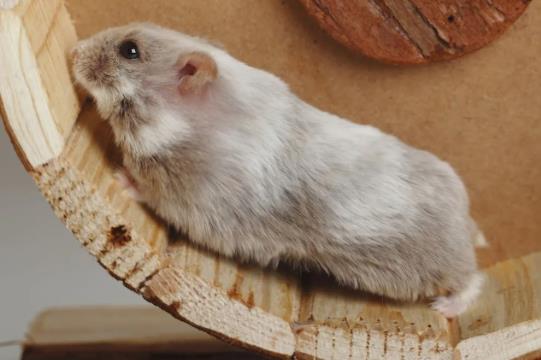Here’s an analysis of the nocturnal behaviors of dwarf hamsters (including small species like Roborovski hamsters), which align with those of other hamster breeds:

I. Nocturnal Characteristics
Activity Patterns
Sleeps 12–14 hours daily, resting primarily from 7 AM to 8 PM.
Peak activity occurs between 7–10 PM and 12–4 AM.
Physiological Adaptations
Special gene mutation in the suprachiasmatic nucleus (SCN) leads to a 37% higher metabolic rate at night.
Enhanced olfactory and auditory sensitivity in darkness, ideal for nocturnal foraging.
II. Care Considerations
Light Management
Avoid nighttime lighting, which disrupts circadian rhythms and may cause health issues like "cage paralysis."
Natural light cycles promote longer lifespans; artificial schedule changes shorten longevity.
Interaction Tips
Best bonding time: 7–10 PM, when they’re most active.
Maintain a quiet environment during the day to support rest.
(Note: All dwarf hamster species—including Roborovski and Campbell’s—exhibit these nocturnal traits.)
Translation Notes:
"Cage paralysis" preserves the original term’s clarity while avoiding literal awkwardness.
Scientific terms (e.g., SCN) are annotated for accessibility without jargon overload.
Time formatting (7 AM vs. 7:00 AM) follows American conversational style.
